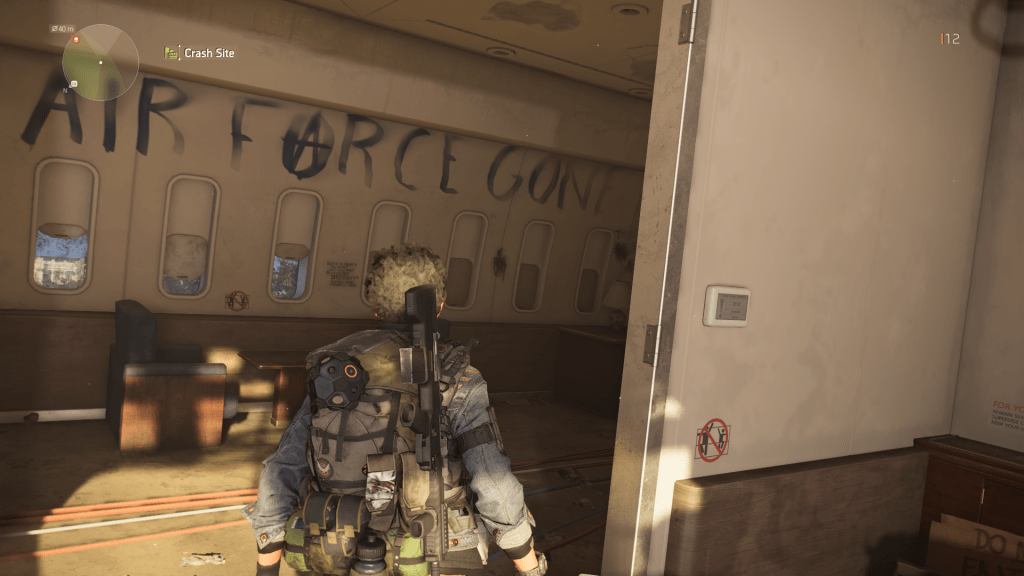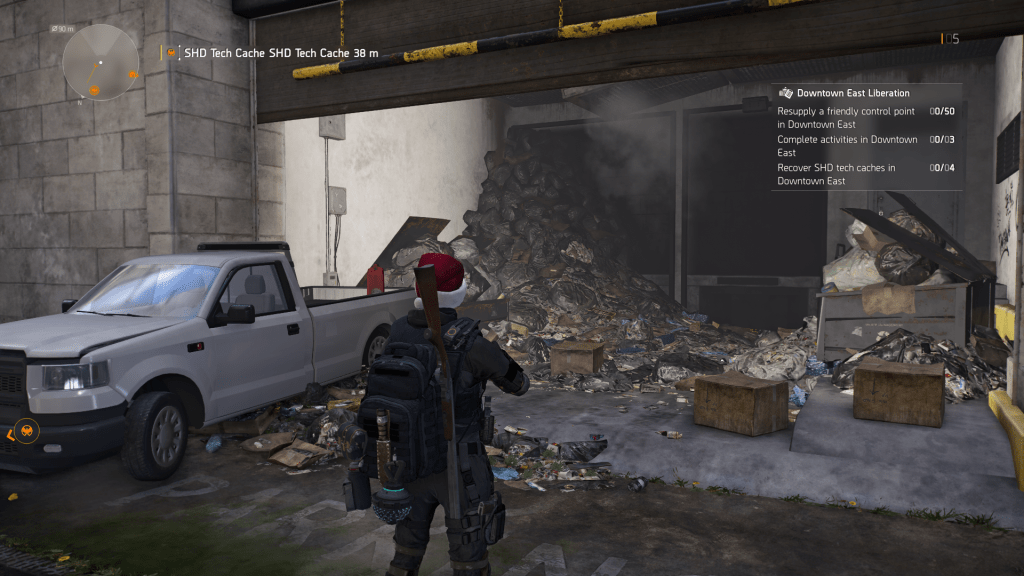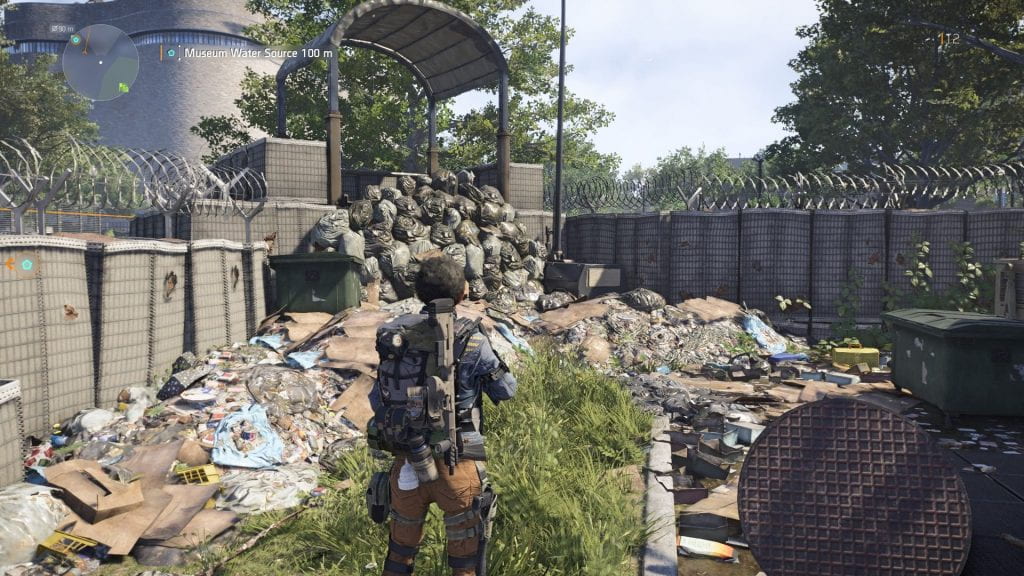In this midst of this quarantine, I’ve decided to turn back to my gaming roots, so to speak. I’ve been craving a good hyper-realistic shooter recently because, for me, the (broad and largely undefined/unexamined) genre has significant nostalgic value. For a variety of reasons, I played a lot of video games, mostly first-person (FPS) and third-person (3PS) realistic shooters with my Dad. From Tom Clancy’s extensive game franchise (like, all of them) to Battlefield’s long franchise history and the proliferation of the Call of Duty franchise—with a bunch in between, naturally—the hyper-realistic shooter genre has grown over the last twenty years and, in a weird way, I grew up with it.
There’s cause to distinguish this development history, too. The genre (again, broadly undefined) responded to foundational games like Halo 3 (2007), Battlefield 3 (2011), Gears of War 3 (2011), the Grand Theft Auto (1997-2013) and Saints Row franchises (2006-2013), and Tom Clancy franchise titles like Splinter Cell (2002-2013), Rainbow Six (1998-2015), and The Division (2016, 2019). Naturally, many of these adapted and reconfigured cues from the genre’s best-selling game series, Call of Duty (2003-2019). The genre itself, however, predominantly draws non-academic discourse and what academic endeavors do exist largely focus on the implications of exposure to the violence in these games (which I will not be taking up here). A 2002 collection of essays, Guns, Grenades, and Grunts: First-Person Shooter Games (GGG), edited by Gerald A. Voorhees, Josh Call, and Katie Whitlock begins to take up some questions about the first-person shooter sub-genre specifically, but this predates the major genre shifts introduced in the mid- and late-2000s. The absence of academic discourse regarding a widely popular, broad category of games reflects a general belief that these texts do not incite substantive or valuable work, perhaps due to their violent content, popularity and mass consumption, corporate influence, non-inclusive history, and hegemonic functions, etc.
In spite of—or perhaps because of—these conceptions, this game space deserves academic inquiry. Importantly, one of the major shifts post-GGG came in the form of realistic shooters becoming appealing to console players in addition to PC players. In part due to Xbox’s heavy investment in franchises like Gears of War and Halo, realistic shooters made the jump from a predominantly PC-driven genre (featuring long-revered game franchises like Counter Strike and Quake). However, as a result of the rise of PC gaming in response to complex esports and streaming-related machinations—this is reductive, of course, but this shift alone deserves its own critical attention—the genre has managed to successfully draw players in both console and PC communities.
And so, as I mentioned earlier, I’m sitting in my room facing several months of reduced Outdoors Time, I’ve turned back to my gaming roots. I picked up The Division 2 (2019), the latest Tom Clancy title, during a sale recently but hadn’t had the time to play the game since its open beta stage last year. Games in the realistic shooter genre, given their (para)military narrative spaces, often have political commentary woven throughout. However, The Division’s campaign narrative is a product of post-2016 America.
While I had played the first game, I forgot about the in-game crisis’ exigence. In The Division, the US infrastructure collapsed under the weight of a pandemic, colloquially called “the Dollar Flu.” A coordinated attack on the nation, the virus is referenced frequently throughout the game from a variety of sources and in-game collectibles called “ECHOs,” players gain a sense of what people thought of the pandemic as it was taking place and how they dealt with it. No mention of toilet paper, thankfully, but talk of it is certainly eerie.
This cutscene sets up the crisis, but more importantly, it makes an argument for who the ‘villain’ or primary antagonist of the narrative. While the player spends most of their time reclaiming territory in Washington, D.C., by fighting factions of looters and criminals that rose up in the absence of local and federal government law enforcement, the game does not hold the pandemic that started the society’s downfall as responsible for the nation’s dystopic state. Rather, the game’s language positions the failure of institutions and the inaction of those in power as primarily responsible for the destruction of pre-pandemic society. Through NPC conversations that players can overhear as they traverse the eerily still, garbage-laden streets, literal writing on walls, voice recordings players can collect throughout the world, and other collectible items, The Division 2 feels like the worst possible—but disconcertingly possible—reality as I look out onto always-busy streets devoid of people.
Of interest to me in particular, which I will extend elsewhere, is the vision of a post-institutional society as one always laden in garbage. From recent films like Joker (2019) to games like Call of Duty: Warzone and The Division 2, heaps of garbage signal the absence of functioning institutions. I think there’s useful work to be done here, in both (1) critically reading the genre’s capability to create meaning as inherently social texts, and in (2) reading the material environments of our games as a means of better understanding how we relate to those materials in our physical environments.



Fantastic post, Janelle. I’m really interested in several of the ideas you bring up here. First, I’m curious what can be said about the ways these realistic shooters tend to reify imperialistic, hegemonic, (maybe even patriotic) mores, but at the same time (in some instances, and to varying degrees) critique or at least make fun of certain elements of the institution they position themselves a part of. Clearly, some titles like Spec Ops: The Line do this very pointedly. But The Division seems less like a game about reflecting on killing looters (if that is indeed what happens; i’ve never played it).
Second, I’m wondering at your starting the account of the genre with Call of Duty — I certainly think an argument can be made in terms of copies sold, etc, but I’m curious where starting there gets us versus starting with some of its precursors like Medal of Honor and even Counter Strike.
Third, the trash thing is really interesting. Eco-unfriendly environmental storytelling!
Great work!
Thanks for your comment, friend! I think there’s plenty to talk about in the ways that these realistic shooters sustain/encourage hegemonic practices, emulate or force players to participate in acts of colonial violence, and often promote toxic social practices and, to my knowledge, that’s something that is culturally understood and generally given a “Yep,” then left alone rather than interrogated. I think you’re right that some titles (though definitely not all) have a certain self-awareness of their complicity with violent/oppressive institutions and try to transgress against that in some way.
I think that the dissemination of the genre that I started definitely needs work and isn’t too clearly defined (yet?). Medal of Honor is certainly a predecessor to the kind of game I’m thinking about. I’m not as familiar with the history of CS as I would like to be–I was more of a Battlefield player as a kid–but I think it’s absolutely influential on the genre. As far as I know (again, limited) CS has always been a round-based game played by teams, which was one of the reasons I didn’t think to include it. I think it would be an interesting project to map these out.
I’m not too familiar with Spec Ops: The Line, but after some quick reading I’ll definitely have to pick that up. After playing FPS/3PS games quite a bit over break and reflecting on these new titles and some classics, I’ve realized this is something I really care about, haha. Thanks for talking with me about it!